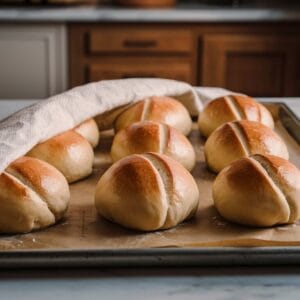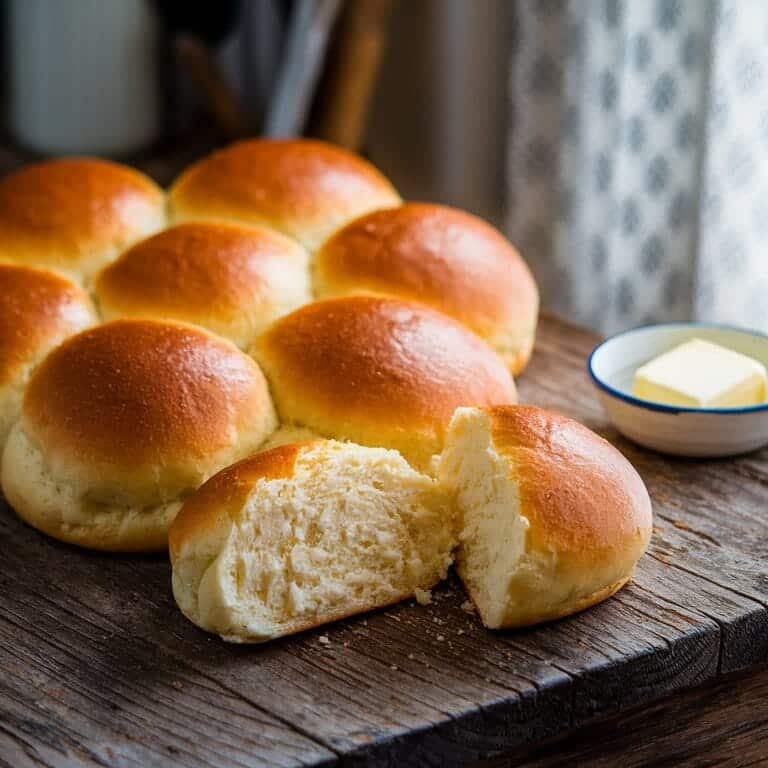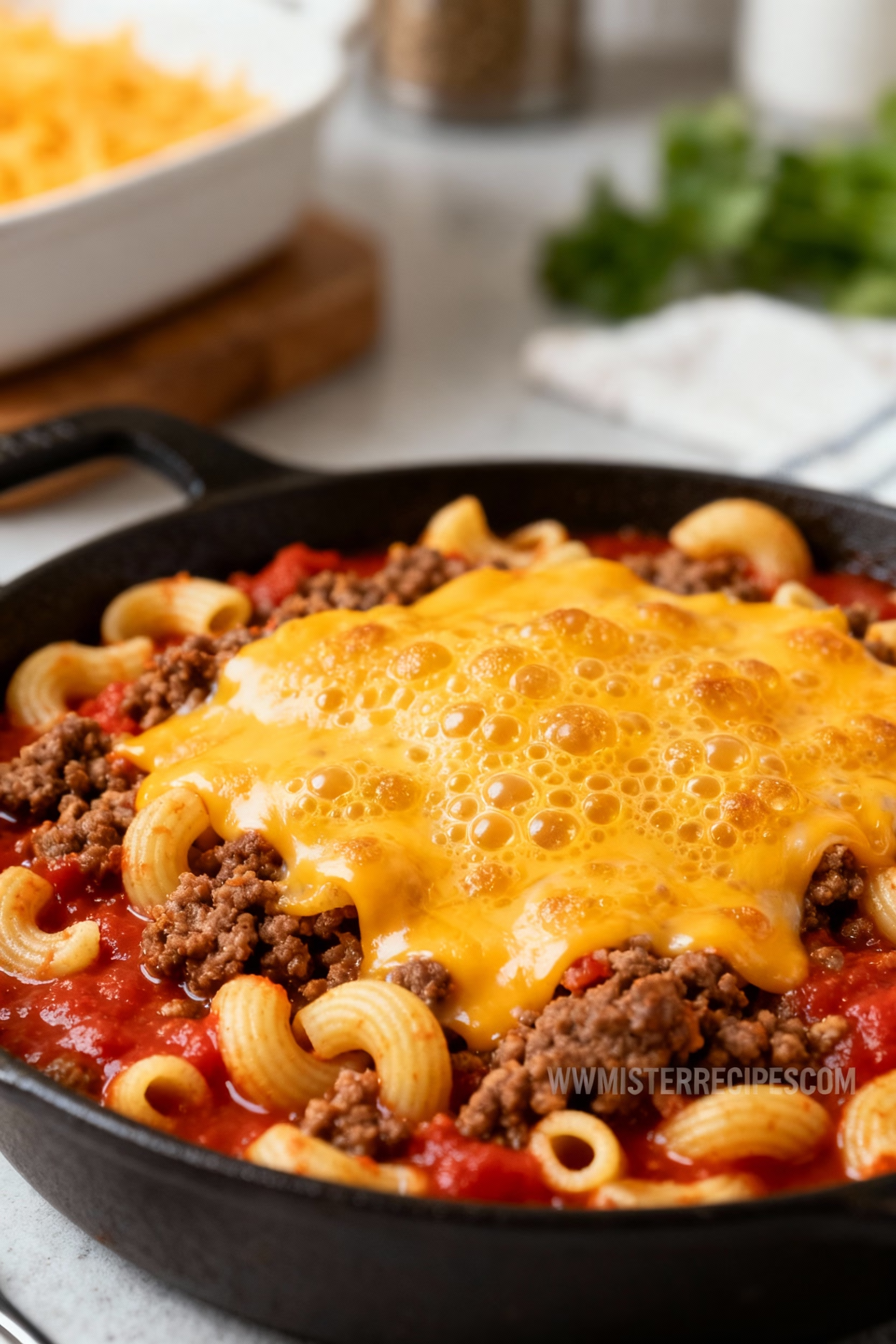Soft, Savory Perfection for Every Meal
Bread rolls are a timeless favorite warm, fluffy, and perfect for any occasion. But have you ever thought about adding a unique twist to them? Enter Cottage Cheese Bread Rolls, a savory delight with a creamy richness that you just can’t resist. Whether you’re a seasoned baker or a beginner eager to try your hand at something new, this recipe is not only accessible but also introduces a layer of texture and flavor that will elevate your bread-making game. Using cottage cheese brings moisture, tenderness, and a subtle tang to the rolls, making each bite more flavorful than the last.
The beauty of these cottage cheese rolls lies in their versatility. You can enjoy them plain with a pat of butter, or use them as a base for sandwiches or sliders. The slightly tangy, creamy notes from the cottage cheese pair perfectly with soups, salads, or even hearty stews. Let’s get ready to bake and discover how this simple yet innovative recipe can transform your bread-baking routine into something extraordinary!
“Good bread is the most fundamentally satisfying of all foods; and good bread with fresh butter, the greatest of feasts.”
James Beard
Table of Contents
Why You’ll Love This Cottage Cheese Bread Rolls Recipe
- Moist and Fluffy: Thanks to the cottage cheese, these rolls stay incredibly soft and moist, even the next day!
- Perfect for Beginners: No complicated techniques or tools are needed. Whether you’re a seasoned pro or just starting out, this recipe is a breeze to follow.
- Versatile: These rolls are perfect as a side dish, a sandwich base, or even just slathered with butter or jam. They fit into breakfast, lunch, or dinner effortlessly.
- Nutritious: With added protein from cottage cheese, these bread rolls are not only delicious but pack a little extra nutrition.
- Unique Flavor: The slight tang of cottage cheese elevates the flavor, making these rolls stand out from regular bread rolls.
- Minimal Ingredients: You don’t need a long list of ingredients. Most are pantry staples, and cottage cheese adds that special twist!

How to Make Cottage Cheese Bread Rolls
Ingredients:
- 2 ¼ teaspoons active dry yeast (1 packet)
- 1 cup warm water (about 110°F)
- 2 tablespoons sugar
- 1 ½ teaspoons salt
- 1 cup cottage cheese (small curd)
- 1 large egg, beaten
- 3 ½ to 4 cups all-purpose flour
- 2 tablespoons melted butter for brushing
Instructions:
Step 1: Activate the Yeast
Start by dissolving the sugar into the warm water. Then, sprinkle the yeast on top and let it sit for about 5-10 minutes until it becomes foamy. This step is crucial because it proves that your yeast is active, ensuring that your rolls rise properly.
Step 2: Mix the Wet Ingredients
In a large mixing bowl, combine the cottage cheese, beaten egg, and salt. Stir everything together until the ingredients are well incorporated. The cottage cheese will add a creaminess that helps keep the rolls soft.
Step 3: Combine the Wet and Dry Ingredients
Once the yeast has activated, pour the yeast mixture into the bowl with the cottage cheese mixture. Stir it all together. Gradually add in the flour, one cup at a time. As the dough starts to come together, you can switch to kneading it by hand or use a stand mixer with a dough hook attachment. Knead the dough for about 5-7 minutes until it’s smooth and elastic, but not too sticky.
Step 4: Let the Dough Rise
Transfer the dough into a lightly greased bowl, cover it with a damp cloth, and let it rise in a warm place for 1-1.5 hours, or until it has doubled in size.
Step 5: Shape the Rolls
Once the dough has risen, punch it down to release the air. Divide it into 12 equal pieces and roll them into balls. Arrange the dough balls on a parchment-lined baking sheet, cover them with the cloth again, and let them rise for another 30-45 minutes.
Step 6: Bake the Rolls
Preheat your oven to 375°F (190°C). Brush the rolls with melted butter to give them a golden, shiny finish. Bake for 15-18 minutes or until they are golden brown on top and sound hollow when tapped on the bottom.
Step 7: Enjoy!
Let the rolls cool slightly before serving. These are best enjoyed warm, straight from the oven!
Tips for Perfect Cottage Cheese Bread Rolls
- Use Fresh Yeast: Always make sure your yeast is fresh. If it doesn’t foam in the activation step, your yeast might be dead and should be replaced.
- Don’t Overheat the Water: If the water is too hot, it can kill the yeast. Aim for around 110°F (warm, but not scalding).
- Check Dough Consistency: Depending on the humidity, you may need more or less flour. The dough should be soft but not too sticky. If it’s too dry, add a bit more water; if too wet, add more flour.
- Let the Dough Rise in a Warm Spot: If your kitchen is cool, place the bowl near a slightly warm oven or in a spot with a bit of natural sunlight to help the dough rise.
- Serve Fresh: While these rolls are great the next day, nothing beats fresh-from-the-oven bread. If you have leftovers, try reheating them briefly to restore their soft texture.

Mocktail Magic – Discover how to make a refreshing Non-Alcoholic Pornstar Martini for your next party.
Recipe FAQ
| Question | Answer |
| Can I use whole-wheat flour instead of all-purpose? | Yes, but the rolls may be denser. Try using half whole wheat and half all-purpose flour for balance. |
| How long do these rolls stay fresh? | Store them in an airtight container for up to 2 days. They freeze well too! |
| Can I use low-fat cottage cheese? | Absolutely! Low-fat or even fat-free cottage cheese works just as well. |
| What can I serve these rolls with? | These rolls go great with soups, salads, and even breakfast spreads. |
| Do I need a stand mixer for this recipe? | No, you can knead the dough by hand, though a mixer makes the process easier. |
People Also Ask
1. Can you refrigerate yeast rolls before baking?
Yes, you can refrigerate yeast rolls before baking, and it is a common practice called “retarding the dough.” This method allows the rolls to develop deeper flavor and can be a time-saver. Here’s how:
- Prepare the dough: Mix and knead your dough as usual.
- First rise: Allow the dough to rise once at room temperature.
- Shape the rolls: After the first rise, shape the dough into rolls.
- Refrigerate: Cover the rolls with plastic wrap or a damp cloth and refrigerate them overnight.
- Bake: Bring the rolls to room temperature (about 30 minutes) before baking. This ensures even cooking and the best texture.
- Refrigeration slows down the yeast activity but doesn’t stop it entirely, which allows flavors to develop.
2. What can you add to cottage cheese to make it taste better?
Cottage cheese has a mild flavor that can be enhanced in both savory and sweet ways. Here are some popular additions:
- Sweet options:
- Fresh fruits like berries, pineapple, or peaches.
- A drizzle of honey, maple syrup, or agave nectar.
- A sprinkle of cinnamon or nutmeg.
- Savory options:
- Chopped herbs like chives, parsley, or dill.
- A dash of salt, pepper, or garlic powder.
- Sliced tomatoes, cucumbers, or avocado for a fresh, savory touch.
- Hot sauce or a squeeze of lemon juice for extra flavor.
- Experiment with flavors to suit your taste. Cottage cheese is versatile and pairs well with many ingredients.
3. Why are my yeast rolls not fluffy?
If your yeast rolls are not fluffy, it could be due to several reasons:
- Old yeast: Yeast that has expired or been stored improperly may not activate properly. Always check the expiration date and proof the yeast if unsure.
- Incorrect kneading: Insufficient kneading can prevent gluten from developing, while over-kneading can make the dough tough.
- Insufficient rise time: Not allowing the dough to rise fully (or rushing it) results in dense rolls. Ensure the dough doubles in size during each rise.
- Temperature issues: Dough that’s too cold or too hot can affect yeast activity. Ensure the liquid used is lukewarm (about 110°F/45°C).
- Improper baking: Overbaking or using too high a temperature can dry out the rolls and make them less fluffy.
4. Is a cottage cheese sandwich healthy?
Yes, a cottage cheese sandwich can be a healthy meal, depending on the ingredients used. Here’s why:
- High protein content: Cottage cheese is a great source of protein, which helps with muscle repair and keeps you full longer.
- Low calorie: It’s typically low in calories, making it suitable for weight management.
- Versatile options: You can use whole-grain bread, add fresh vegetables, and season with healthy spices for added nutrients.
- Potential for customization: Avoid heavy sauces or unhealthy toppings to keep it nutritious.
- Cottage cheese sandwiches can be tailored to meet dietary preferences, from low-carb to high-protein diets.
5. Can yeast bread be refrigerated overnight and baked the following day?
Yes, yeast bread dough can be refrigerated overnight and baked the next day. Here’s how:
- Mix and knead the dough: Prepare the dough as you normally would.
- First rise: Allow the dough to rise at room temperature until it doubles in size.
- Refrigerate: After shaping the dough into loaves or rolls, cover and place it in the refrigerator.
- Second rise: Remove the dough from the refrigerator and let it come to room temperature for the second rise (about 30-60 minutes) before baking.
- This method enhances flavor and can make the process more convenient.
6. Why did my yeast rolls turn out dry?
Dry yeast rolls can result from several issues:
- Overbaking: Baking for too long or at too high a temperature can dry out the rolls. Use a thermometer to ensure the internal temperature reaches 190°F (88°C).
- Insufficient moisture in the dough: The dough should be slightly sticky after kneading. If it’s too dry, add a little more liquid.
- Stale ingredients: Old flour or stale yeast can affect the moisture content.
- Inadequate fat: Fat (like butter, oil, or eggs) adds richness and moisture. Ensure the recipe includes enough fat.
- Storage issues: Rolls left uncovered after baking will lose moisture quickly. Cover them with a clean cloth as they cool and store them in an airtight container.
Common Mistakes When Making Cottage Cheese Bread Rolls:
- Skipping the draining step: Cottage cheese contains liquid that can affect the dough’s consistency. Drain it thoroughly before adding.
- Overmixing the dough: This can make the rolls tough and dense. Mix just until the ingredients are combined.
- Using the wrong flour: All-purpose flour works best for soft rolls. Bread flour can make them chewier if not balanced correctly.
- Not proofing the yeast: Ensure your yeast is active before adding it to the dough to avoid flat, dense rolls.
- Skipping the glaze or butter topping: A light glaze or butter brushed on the rolls after baking adds flavor and prevents them from drying out.
Conclusion
Cottage cheese bread rolls are a delicious and nutritious option that combines the creamy flavor of cottage cheese with the soft texture of homemade rolls. By following the correct techniques and avoiding common mistakes, you can create rolls that are fluffy, moist, and flavorful. Always pay attention to ingredient quality, dough consistency, and baking times for the best results. Whether served as a side dish or a snack, these rolls are sure to impress!
Kickstart Your Day! Whip up Coffee-Infused Overnight Oats for a wholesome breakfast.

Cottage Cheese Bread Rolls
Equipment
- Mixing bowl
- Baking sheet
- stand mixer (optional),
- Parchment paper
Ingredients
- 2 ¼ teaspoons active dry yeast 1 packet
- 1 cup warm water about 110°F
- 2 tablespoons sugar
- 1 ½ teaspoons salt
- 1 cup cottage cheese small curd
- 1 large egg beaten
- 3 ½ to 4 cups all-purpose flour
- 2 tablespoons melted butter for brushing
Instructions
- Step 1: Activate the Yeast
- Start by dissolving the sugar into the warm water. Then, sprinkle the yeast on top and let it sit for about 5-10 minutes until it becomes foamy. This step is crucial because it proves that your yeast is active, ensuring that your rolls rise properly.
- Step 2: Mix the Wet Ingredients
- In a large mixing bowl, combine the cottage cheese, beaten egg, and salt. Stir everything together until the ingredients are well incorporated. The cottage cheese will add a creaminess that helps keep the rolls soft.
- Step 3: Combine the Wet and Dry Ingredients
- Once the yeast has activated, pour the yeast mixture into the bowl with the cottage cheese mixture. Stir it all together. Gradually add in the flour, one cup at a time. As the dough starts to come together, you can switch to kneading it by hand or use a stand mixer with a dough hook attachment. Knead the dough for about 5-7 minutes until it’s smooth and elastic, but not too sticky.
- Step 4: Let the Dough Rise
- Transfer the dough into a lightly greased bowl, cover it with a damp cloth, and let it rise in a warm place for 1-1.5 hours, or until it has doubled in size.
- Step 5: Shape the Rolls
- Once the dough has risen, punch it down to release the air. Divide it into 12 equal pieces and roll them into balls. Arrange the dough balls on a parchment-lined baking sheet, cover them with the cloth again, and let them rise for another 30-45 minutes.
- Step 6: Bake the Rolls
- Preheat your oven to 375°F (190°C). Brush the rolls with melted butter to give them a golden, shiny finish. Bake for 15-18 minutes or until they are golden brown on top and sound hollow when tapped on the bottom.
- Step 7: Enjoy!
- Let the rolls cool slightly before serving. These are best enjoyed warm, straight from the oven!
Notes
Nutrition per roll (approx):
Calories: 150 | Carbohydrates: 24g | Protein: 6g | Fat: 4g | Saturated Fat: 2g | Polyunsaturated Fat: 0.5g | Monounsaturated Fat: 1g | Sodium: 230mg | Potassium: 60mg | Fiber: 1g | Sugar: 1g | Vitamin C: 0% | Calcium: 40mg | Iron: 1mgLet me know!
Did you find this post helpful? By leaving a star rating and share, it will help others find my recipes.




